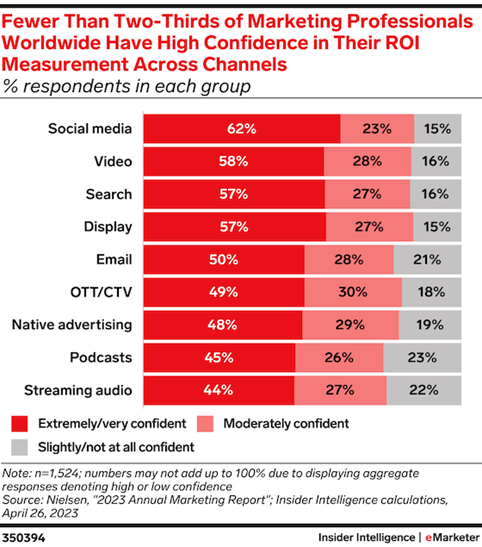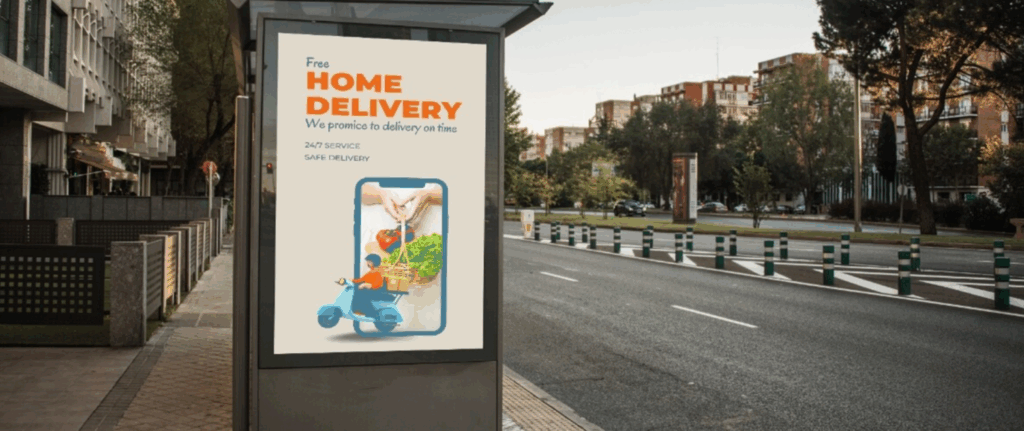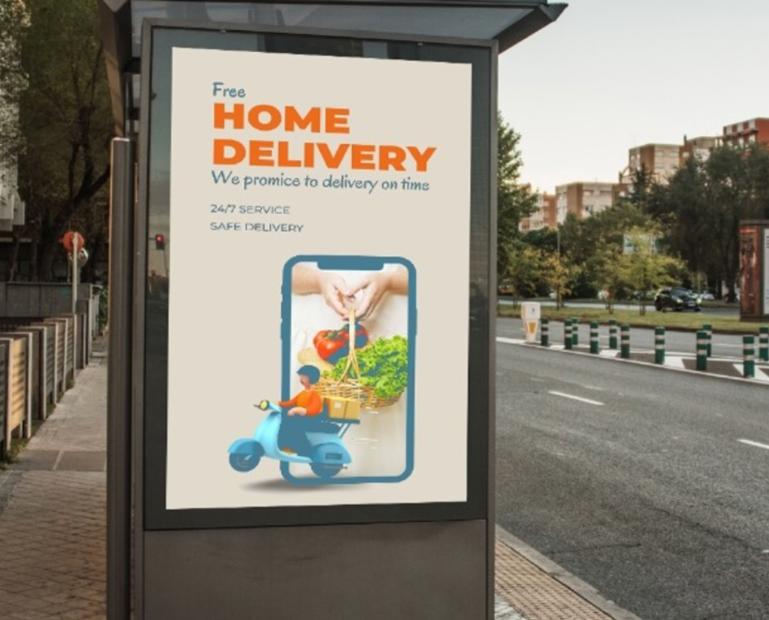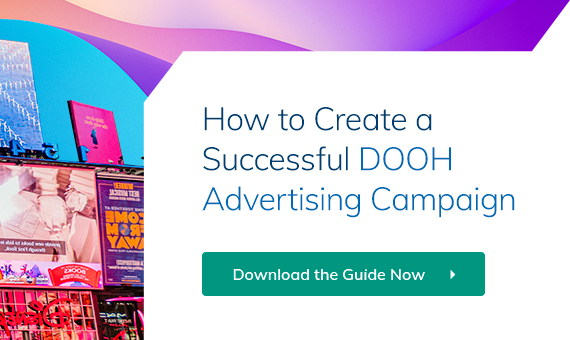Why Agencies Need to Maximize their Clients’ ROI
Organizations looking to promote their products and services through out-of-home or OOH advertising want and expect to see a positive return on their investment.
Recent studies indicate that 88% of marketing leaders are now responsible for revenue goals, which puts pressure on them to justify their team’s ad spend with clear, actionable data that ties directly to measurable business outcomes.
If they feel that their work with your agency simply has them throwing good money after bad, they’ll quickly turn to someone else, who can improve this situation. In fact, around 70% of brands this year are expected to switch advertising agencies if their current agency consistently fails to demonstrate a positive return on investment (ROI).
Most market leaders agree that better measurement would unlock more ad spend across channels. Over 80% of brands will therefore prioritize agencies that can clearly demonstrate a quantifiable return on ad spend through detailed reporting and analytics.

(Image source: eMarketer)
Fortunately, a recent study by Analytics Partners reveals that reallocating even a small portion of your marketing budget to OOH advertisements can boost ROI by up to 27% – especially when combined with other channels like digital and TV.
Key Strategies for Maximizing ROI with OOH Advertising
To ensure clients get the most value from their OOH advertising investment, agencies must take a strategic approach that optimizes placement, audience targeting, messaging, and measurement.
Here are the most effective ways to maximize OOH ROI.
1.Target the Right Audience with Data-Driven Insights
Reaching the right people at the right time is essential for a high-performing OOH campaign. Instead of relying solely on high-traffic areas, agencies should use data analytics to identify locations where the target audience is most likely to engage. This involves leveraging demographic data, behavioral insights, and geolocation technology to refine placement decisions – which can all be done simply and easily via a powerful programmatic DOOH (pDOOH) platform.
Read more: The Beginners Guide to pDOOH: Programmatic DOOH and Why It’s a Game-Changer
Example: A luxury car brand targeting affluent professionals could use mobile data to track where their ideal audience frequently shops, dines, or commutes. By targeting digital billboards near high-end shopping districts and business hubs, the brand ensures its message reaches the most relevant audience, improving conversion potential.
2. Select High-Impact Locations for Maximum Visibility
Strategic ad placement can significantly boost impressions and engagement. Agencies should consider foot traffic, dwell time, and contextual relevance when choosing locations. High-traffic areas such as transit hubs, shopping centers, and entertainment districts increase exposure, while placements near relevant businesses or competitor locations can enhance targeting precision.
Example: A meal delivery service could target bus stops or digital billboards near busy train stations during evening rush hours, displaying limited-time dinner promotions to commuters heading home. This not only ensures high visibility but also aligns with the audience’s immediate needs, increasing conversion likelihood.

(Image source: google.com)
3. Create Visually Striking and Memorable Messaging
OOH advertising must capture attention quickly. To maximize impact:
- Use bold, high-contrast visuals that stand out in busy environments.
- Keep text concise and easily readable from a distance.
- Incorporate motion graphics or animations on digital screens to enhance engagement.
- Include a clear call-to-action (CTA) that directs viewers to take the next step, whether it’s visiting a website, scanning a QR code, or engaging on social media.
Example: A fitness brand launching a new product could use a time-sensitive message like “Limited Offer: Get 20% Off Gym Membership – Scan Here!” on a dynamic digital screen. The use of motion elements – such as a countdown timer – creates urgency and drives immediate action.
4. Integrate OOH with Digital Campaigns for Greater Reach
OOH advertising works best when it complements digital efforts. Agencies should integrate OOH campaigns with online channels, allowing audiences to engage further via social media, email, or mobile apps.
Ways to achieve this include:
- QR codes linking to landing pages or promotions.
- Geofencing to serve digital ads to people who have recently passed an OOH display.
- User-generated content (UGC) campaigns that encourage social media interaction with the OOH creative.
Read more: How to Combine DOOH and Social Media for Destination Marketing
Example: A fashion retailer launching a new collection could display user-generated social media posts featuring customers wearing their products. Digital billboards could include a hashtag like #StreetStyleX and invite viewers to share their own looks for a chance to be featured – blending physical and digital engagement.
5. Track and Measure Performance for Continuous Optimization
Measuring OOH effectiveness is essential for proving ROI. Agencies should use:
- Mobile location tracking to analyze how many people exposed to an OOH ad visited a store or website.
- Attribution modeling to link ad exposure to online conversions.
- Heatmaps & footfall analytics to refine future location targeting.
Example: A hospitality brand promoting a new hotel could use foot traffic analytics to see how many people who passed their OOH ad later booked a stay online. If engagement is low, the agency could refine messaging, relocate ad placements, or adjust targeting criteria.
6. Leverage Programmatic OOH for Smarter Ad Buying
Programmatic DOOH (pDOOH) allows agencies to buy and display OOH ads in real-time, optimizing placements based on audience data, weather, time of day, and even live events. With automated bidding, agencies ensure clients’ ads appear at the most impactful moments – without overspending.
Example: A coffee chain using programmatic DOOH could schedule ads promoting iced coffee during heatwaves and hot beverages on colder days. By dynamically adjusting messages based on weather conditions, they maximize relevance and increase sales.
Final Thoughts: Smarter OOH Strategies Deliver Higher ROI
For agencies, maximizing ROI with OOH advertising means more than just securing prime locations – it requires strategic audience targeting, impactful creative execution, digital integration, and continuous measurement. By adopting a data-driven, omnichannel approach, agencies can ensure their clients’ ad spend generates measurable business results.
The Neuron’s programmatic DOOH platform simplifies this process, providing real-time optimization, dynamic targeting, and advanced analytics to enhance campaign performance.


